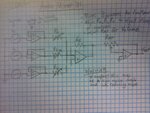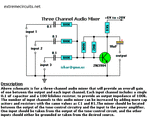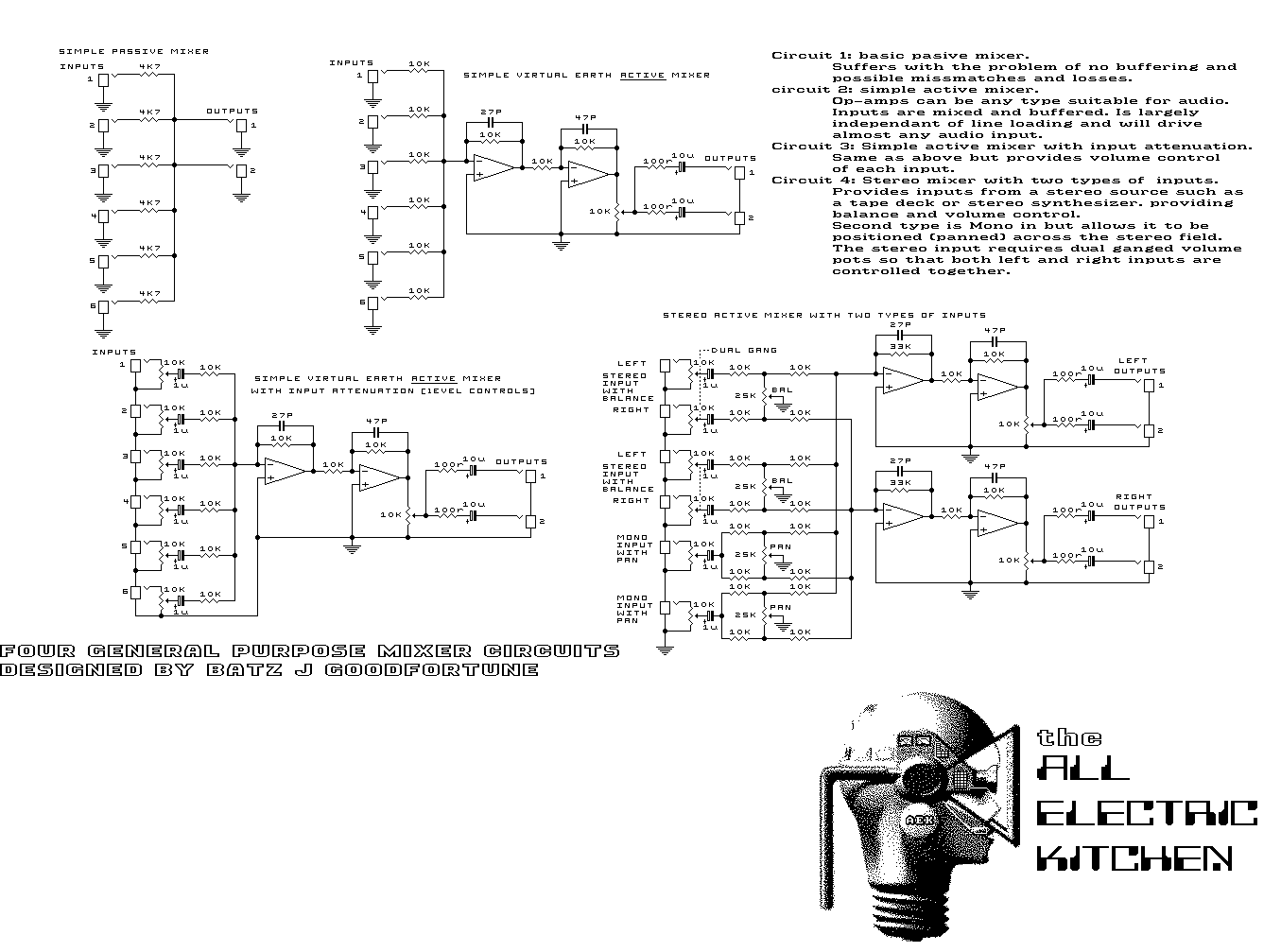DFW Z33
Junior Member level 1
Hi guys, I am trying to make a simple audio mixer that will take 3 input channels (like my PC sound, iPod and Phone) and mix them into one output to a CMOY amplifier, and then to my headphones. I came up with this schematic, but Im sure it has several flaws which I was hoping you guys could help me find.
Also, I will be using the uA741 opamp, so I am really concerned that this schematic will cause a lot of noise in the signal.
Can anyone give me some tips on what I can do to improve on this design, or perhaps point me in another design direction?
Thanks!
Sorry for the crappy schematic, it's all I have to work with right now.

Also, I will be using the uA741 opamp, so I am really concerned that this schematic will cause a lot of noise in the signal.
Can anyone give me some tips on what I can do to improve on this design, or perhaps point me in another design direction?
Thanks!
Sorry for the crappy schematic, it's all I have to work with right now.



